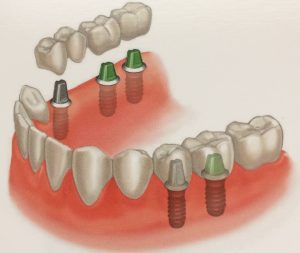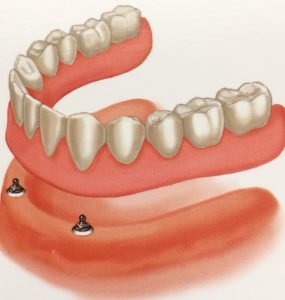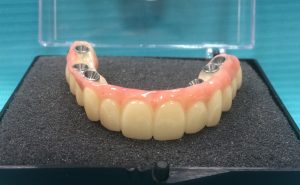Types of Dental Implants[In depth guide]
One of the most common question we get is ” What type of dental implant is best for me?”, and the answer may be very simple or in some cases very complicated, and that depends on your individual case, number of missing teeth, shape and quality of your remaining Jaw bone, overall physical health, medications you may be taking, and sometimes age may be a factor.
I may say that in most cases there is a solution for every patient, so let me explain:
How many types of dental implants are available ?
Implant dentistry is not a new discipline in the dental field, dentist have been placing implants for more than 50 years, Gösta Larsson (1931–2006) was the first recipient ever of a modern dental implant, which occurred in 1965. There are different types of dental implants, but the most common in use today are the endosteal dental implants.
Types of Endosteal Dental Implants
- Regular size dental Implants: usually from 3.5mm to 7mm in diameter, I will explain the indications and recommendation for their use, later in this post.
- Mini dental Implants: they are narrower than the previous implants and their diameter is between 1.8mm to 3.0mm, and they are very popular when patients are lacking enough bone.
- Zigomatic Implants: They are very long implants and they are anchored in the zigoma bone, when there is insufficient bone in the posterior part of the upper jaw (maxilla), and bone graft is not possible.
Benefits of replacing missing teeth with dental implants
There are many advantages when you get dental implants in order to replace missing teeth, here we list some of the most important
- Comfort and improved self esteem, no more sore spots or loose dentures, many people become more confident when speaking, laughing and chewing.
- Better appearance and improved speech, most people get a younger look with their new teeth, a discolor and worn dentition can add years to your appearance.
- Improved oral hygiene and convenience, as easy as cleaning your own teeth.
- Long term durability, dental implants can last a lifetime with proper dental care and professional maintenance.
- Dental implants have a success rate of up to 98%
Now with this background on dental Implants let’s discuss the possible treatment options.
Treatment options using regular size dental Implants
In this section we will evaluate what would be the best recommendation for different scenarios:
1- Replacing a missing tooth with a single dental implant: this is the treatment of choice when replacing a single tooth, compare to other methods, for many years the only option was to use a fixed bridge, which still is a good option, however the use of implants is a much more conservative approach since you don’t have to touch the adjacent teeth to where the tooth will be replaced.
In order to fabricate a fixed bridge, you have to drill or reduce the tooth in front and the tooth in the back of the missing tooth to make space for the bridge, however a bridge can last for 5 to 15 years or more, but if proper care is not maintain it will drastically cut short the years of service of the bridge, for example if you get decay under the bridge, you will have to replace that bridge with a new one, and if the problem is not detected early, it may lead to failure of the bridge including the loss of the teeth supporting the bridge.
What can you do if you lost your fixed bridge to decay?, well if your dentist can salvage the teeth supporting the old bridge, then you could get a new one or two crowns one in each of the 2 teeth that were supporting the bridge and a single tooth implant to replace the original missing tooth, by doing this you will get 3 individual teeth which is more easy to maintain.
2-Replacing more than two missing teeth with dental implants: there is two options here, let’s say you are missing two or three teeth, then they can be replaced with 2 or 3 single implants or a fixed bridge over 2 implants could be used. In most  cases 2 implants are enough support, but in some cases of long spans between teeth more implants would be needed. My personal preference is to replace each tooth individually for easier oral hygiene, it is easier to floss between single teeth implants than under an implant bridge, however this is a minor inconvenience and both treatment options work really well.
cases 2 implants are enough support, but in some cases of long spans between teeth more implants would be needed. My personal preference is to replace each tooth individually for easier oral hygiene, it is easier to floss between single teeth implants than under an implant bridge, however this is a minor inconvenience and both treatment options work really well.
3- Replacing all your teeth with dental implants: There is also 2 popular options here,
- Overdenture: denture made out acrylic to replace all teeth upper or lower jaw, using at least 2 implants to give stability and some retention to the denture, most people are happy with this option, it is a good combination of comfort and low budget, while this is a better option than a regular denture, still you have to remove it every night to clean it up. This type of denture has devices called attachments and they connect to the implants thus enhancing stability and retention, this attachments need to be service at least once a year. Since this denture is made with acrylic has a life span of 5 to 10 years.

- hybrid bridge: this type of denture is the combination between a regular denture and a fixed bridge, and replaces all your teeth upper or lower.This bridge is considered a fix removable type, because for you is fixed and you will treat it as your natural teeth, with daily brushing and flossing, but your dentist can unscrew the bridge for maintenance if necessary. It requires more implants, at least four but usually 6 to 8 are used for added strength and support of the hybrid bridge. I believe it is safer to use more than 4 implants because if a complication occurs with one of the 4 implants and you end loosing it, the hybrid bridge will no longer work and you will have to get another implant to make it 4 again and a new bridge, because the existing one will not longer fit on the new implant. Even though clinicians report a good success rate with” all in 4 hybrid bridges” still we need to see results long term.
For people that have used regular dentures for years is a totally game changer, they can basically eat anything they want, it is fixed and strong, it does not move like a denture, your speech is improved and you are not afraid that the denture is going to come out of your mouth if you laugh to hard, they are made out of zirconia using 3 D milling machines, the fit and the precision is enhanced because everything is done with specialized software from beginning to end the bridge is designed in a computer.
Zirconia looks beautiful, is strong and has no pores like acrylic (regular denture material), thus preventing stains and bad odor, as acrylic ages it changes in color, looks dull and get stains more easily, and the teeth wear off, on the other hand zirconia is heavier than acrylic, but most people don’t notice the difference, and as you use your new teeth you muscles become stronger and the efficiency in chewing your food becomes greater, so this little difference is out weighted by all the advantages of using zirconia, plus last longer than acrylic and is virtually unbreakable. I’m not saying that people should not use acrylic, what I mean is that new technology is coming and we should take advantage of it as it is the case for zirconia and 3 D printed complete dentures.
Treatment options using Mini Dental Implants (MDI)
1- Replacing a missing tooth with a single dental implant: Because of the narrow diameter of this implant, they are usually indicated in deficient or narrow bone, and the most common indication would be the replacement of congenitally missing upper lateral incisors or lower front incisors, the main advantage of this implants it is that it does not require regular implant surgery because they are inserted thru the gum into the bone without having to do a conventional flap or opening of the gum, or placing stitches, for this it takes less healing time and they can be restore intermediately or a week or 2 after.

2- Replacing all missing teeth with an overdenture supported by several mini dental implants: this type of treatment works well in patients with narrow jaw bone or adequate bone, the primary purpose is to give stability and retention to a lower complete denture. All patients wearing complete lower dentures know how difficult is to control it while eating or speaking because of the movement, the only thing that is keeping the denture in place is gravity, some people opt for denture glue, however listening to patients I learned that it is inconvenient and messy, some said that they partially eat the glue with their food, and when they remove their denture at night it is a real challenge to remove all the glue from their gum.
thousands of people have to deal every day with ill fitting dentures and the discomfort associated sore spots and maybe for most it can be solved in one day, but you may be wandering how?, what we usually do is :



- Insert 4 to 6 mini dental implants and retrofit your existing denture for immediate improvement.
- Make a new denture that will fit over your gum and the implants. in some cases a new set upper and lower dentures would be required for a proper bite.
- This is effective and budget friendly.
Finishing thoughts
In this post I tried to give a broad idea of the many options that anyone could have with implant dentistry, but everybody is different and the content here is for illustration purposes and is not intended to diagnose or treat a condition. I really hope this information was useful to you and now you have a better understanding on how implant dentistry can help you.
If you want to know more about your personal options you can contact us at (954)796-0310 and make an appointment for a free no obligation consultation to know exactly what would be the best treatment recommendations in your case.
God bless!

![Types of Dental Implants[In depth guide]](https://dentistacoralsprings.com/wp-content/uploads/2019/04/woman-front-r.jpg)
